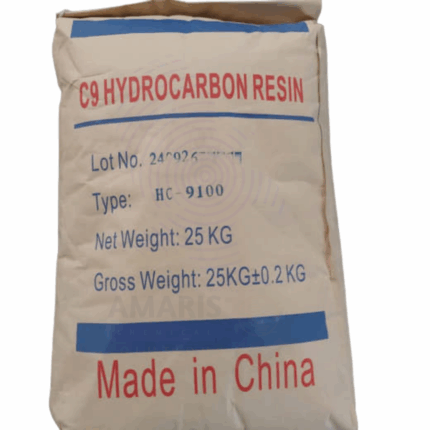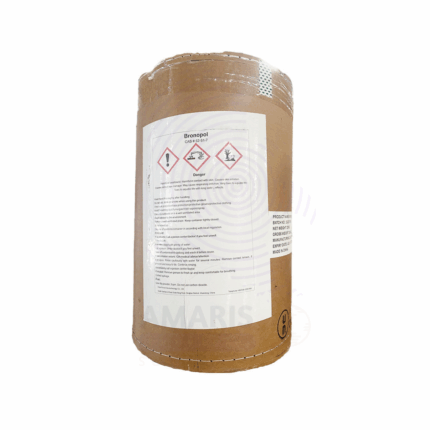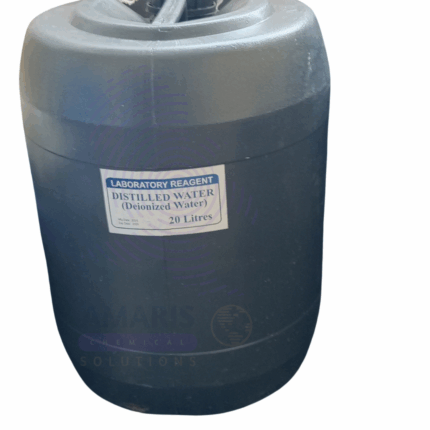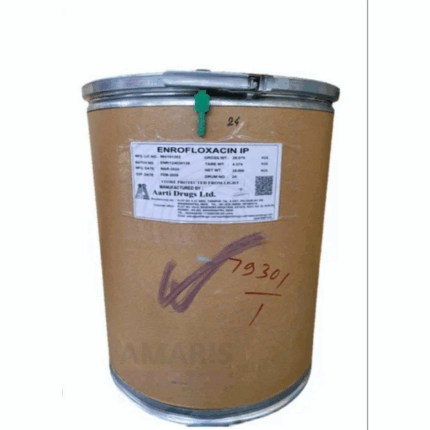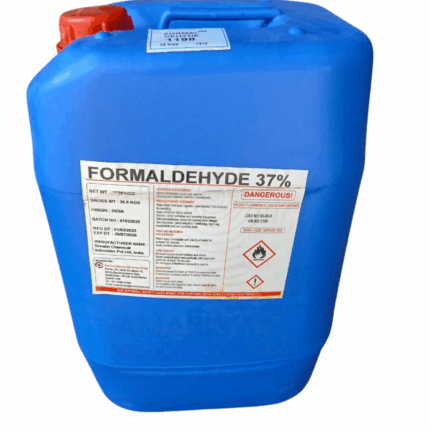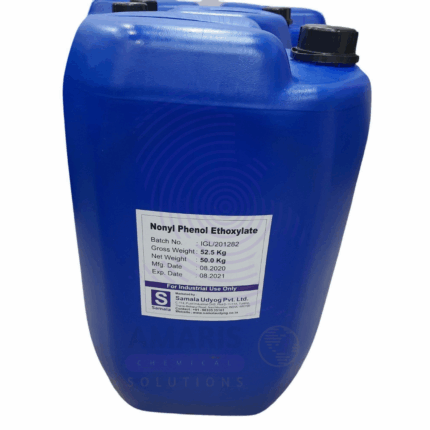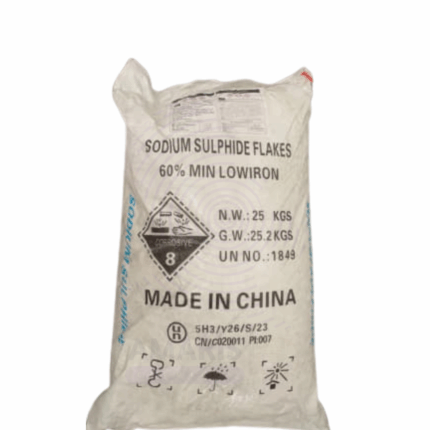Hydrazine Food Grade
Whatsapp Order
Hydrazine Food Grade is a high-purity form of hydrazine (N₂H₄), a highly reactive, colorless, and fuming liquid with a pungent ammonia-like odor. It is a powerful reducing agent and chemical intermediate widely used in industrial applications. The food-grade specification ensures purity and controlled impurity levels suitable for limited and specialized food industry uses, primarily as a processing aid or sterilizing agent. Hydrazine exhibits strong nucleophilic and reducing properties, enabling various chemical transformations and sterilization processes.
Description
Table of Contents
Toggle
Hydrazine Food Grade
Primary Uses
- Food Industry
- Utilized as a processing aid in the manufacture of food additives such as azodicarbonamide, which acts as a flour bleaching and dough conditioning agent in baked goods.
- Employed in food packaging production processes where it serves as a chemical intermediate for polymer synthesis.
- Used in sterilization and sanitization of food processing equipment and water treatment, ensuring microbial control without residual toxicity when used properly.
- Applied in fumigation and microbial control in food storage facilities under strict regulatory guidelines.
- Pharmaceutical and Chemical Industry
- Functions as a chemical intermediate in the synthesis of pharmaceuticals, agrochemicals, and polymer resins used indirectly in food-contact materials.
- Acts as a reducing agent in various chemical syntheses integral to producing food-grade ingredients.
- Water Treatment
- Used as an oxygen scavenger in boiler feedwater and cooling systems within food processing plants to prevent corrosion and microbial growth.
Secondary Uses
- Laboratory and Analytical Chemistry
- Utilized in analytical procedures for detecting certain metals and compounds in food samples.
- Biochemical Research
- Applied as a reagent in enzyme assays and biochemical studies relevant to food science.
KEY ATTRIBUTES
- Basic Identification Attributes
- Chemical Name (IUPAC): Hydrazine hydrate (Food Grade)
- Common/Trade Name: Hydrazine Food Grade
- CAS Number: 302-01-2 (anhydrous hydrazine), typically supplied as hydrate solution
- HS Code: 2811.19.00
- Molecular Formula: N₂H₄ (anhydrous), typically supplied as N₂H₄·H₂O (hydrate)
- Synonyms: Diamine; Hydrazine hydrate (food grade)
- Physical & Chemical Properties
- Physical State: Clear, colorless to pale yellow liquid
- Color & Odor: Odor of ammonia; pungent, sharp odor
- Boiling Point: ~113°C (hydrate)
- Melting Point: 2°C (hydrate)
- Density: ~1.032 g/cm³ (hydrated solution)
- Solubility: Miscible with water and most polar solvents
- pH: Alkaline (pH ~10–11 for aqueous solutions)
- Stability: Stable under alkaline, cool, and dark conditions; reactive and decomposes under acidic or heat exposure
- Safety & Hazard Attributes
- GHS Classification: Acute Toxicity (Oral, Dermal, Inhalation), Corrosive, Flammable, Mutagenic (Classifications vary by concentration)
- Toxicity: Highly toxic and corrosive; handle with extreme care
- Exposure Limits: Strict occupational exposure limits due to toxicity and volatility
- Storage & Handling Attributes
- Container Type: High-density polyethylene or stainless steel containers resistant to corrosion
- Storage Conditions: Store in cool, well-ventilated, secure area away from acids, oxidizers, and heat sources
- Shelf Life: Typically 6–12 months under recommended storage
- Handling Notes: Use explosion-proof ventilation; avoid contact with incompatible substances
- Regulatory & Compliance Attributes
- Permitted uses regulated by food safety authorities; approved only for specific processing aids and indirect food contact applications
- Compliance with FDA, EFSA, and other regional food safety standards where applicable
- Subject to strict transport and handling regulations due to toxicity and hazard classification
- Environmental & Health Impact
- Biodegradability: Readily biodegradable in aerobic environments
- Ecotoxicity: Toxic to aquatic life; avoid environmental release
- Bioaccumulation: Not expected to bioaccumulate
- Carcinogenicity/Mutagenicity: Classified as a possible mutagen and carcinogen; use restricted and controlled
SAFETY HANDLING PRECAUTIONS
- Safety Handling Precautions
- PPE Required: Full chemical protective suit, gloves resistant to hydrazine, chemical goggles, and self-contained breathing apparatus in case of spills or high exposure
- Handling Guidelines: Use in well-ventilated areas or fume hoods; avoid all direct contact; no ignition sources nearby
- Hygiene Practices: Immediate washing if contact occurs; thorough decontamination after handling
- First Aid Measures
- Inhalation: Move victim to fresh air immediately; administer oxygen if breathing is difficult; seek emergency medical care promptly
- Skin Contact: Remove contaminated clothing; rinse skin with plenty of water for at least 15 minutes; seek immediate medical attention
- Eye Contact: Rinse eyes thoroughly with water for at least 15 minutes; urgent medical evaluation required
- Ingestion: Do NOT induce vomiting; rinse mouth and seek immediate emergency medical assistance
- Firefighting Measures
- Fire Hazards: Flammable and may form explosive mixtures with air; releases toxic nitrogen oxides and ammonia when burning
- Extinguishing Media: Use dry chemical, foam, or carbon dioxide; avoid water jets as they may spread the fire
- Special Precautions: Firefighters must wear full protective gear and self-contained breathing apparatus
- Combustion Products: Toxic gases including nitrogen oxides and ammonia
Related products
Bronopol
Bronopol (2-Bromo-2-nitropropane-1,3-diol) is a water-soluble, white crystalline powder or granules with a slight odor. It is a synthetic antimicrobial agent widely used as a preservative in personal care products, pharmaceuticals, cosmetics, and industrial applications. Bronopol exhibits broad-spectrum bactericidal and fungicidal activity, making it effective against a wide range of microorganisms. It works by releasing active formaldehyde slowly, which disrupts microbial metabolism and reproduction.
Cupric Sulphate Anhydrous
Cupric Sulphate Anhydrous (Copper(II) sulfate, anhydrous form) is a blue to green crystalline powder that is highly soluble in water. It is an inorganic compound consisting of copper, sulfur, and oxygen with the formula CuSO₄. Unlike its hydrated counterpart (CuSO₄·5H₂O), the anhydrous form contains no water molecules. It is widely used in agriculture, industry, and chemical manufacturing due to its fungicidal, algicidal, and chemical reactivity properties. The compound serves as a precursor to many copper salts and catalysts.
Distilled Water
Distilled Water is purified water that has been processed through distillation, a method involving evaporation and subsequent condensation to remove impurities, salts, minerals, and organic matter. This results in ultra-pure, clear, odorless, and tasteless water free of dissolved solids and contaminants. Distilled water is non-conductive, neutral in pH under ideal storage, and chemically stable. It is widely used across pharmaceutical, laboratory, medical, industrial, and consumer applications where high water purity is critical.
Enrofloxacin Hydrochloride
Enrofloxacin Hydrochloride is a broad-spectrum fluoroquinolone antibiotic used primarily in veterinary medicine. It is the hydrochloride salt of enrofloxacin, offering enhanced solubility and bioavailability. Enrofloxacin inhibits bacterial DNA gyrase and topoisomerase IV, disrupting DNA replication in Gram-negative and Gram-positive organisms as well as some Mycoplasma species. It is available as a white to off-white crystalline powder, used in injectable, oral, and topical formulations designed for livestock, companion animals, and aquatic species.
Formalin
Formalin Formaldehyde is an aqueous solution containing approximately 37% formaldehyde by weight, stabilized typically with 10-15% methanol to prevent polymerization. It is a clear, colorless liquid with a pungent, penetrating odor. Formaldehyde is a simple aldehyde widely used as a disinfectant, preservative, and chemical intermediate. Formalin’s powerful antimicrobial and tissue-fixation properties make it essential in medical, laboratory, industrial, and manufacturing applications. It is one of the most commonly used chemicals worldwide for sterilization, embalming, and resin production.
Nonylphenol Ethoxylate
Nonylphenol Ethoxylate is a non-ionic surfactant belonging to the alkylphenol ethoxylate family, characterized by an average of 9 ethylene oxide units. It is widely used as a detergent, emulsifier, dispersant, and wetting agent in various industrial and commercial applications. NPE9 offers excellent cleaning power, low foaming properties, and good compatibility with other surfactants, making it a versatile ingredient in formulations such as textile processing, paints, coatings, and metal treatment.
Sodium Sulphide
Sodium Sulphide (Na₂S) is a yellow to red-yellow crystalline solid or powder with a characteristic odor of hydrogen sulfide. It is highly soluble in water, forming strongly alkaline solutions. This 25kg packaged product is widely used in the chemical, leather, pulp and paper, and textile industries as a reducing agent, sulfur donor, and in flotation processes. Due to its strong reducing properties and reactivity, it must be handled with care under proper safety measures.
Sodium Sulphite Blue
Sodium Sulphite Blue is a white to bluish-white crystalline powder with the chemical formula Na₂SO₃. The “Blue” grade indicates a specific industrial quality often containing minor additives or impurities, used primarily in water treatment and chemical industries. It acts as an effective oxygen scavenger, reducing agent, and preservative. This 25kg packaged product is highly soluble in water, forming alkaline solutions, and is widely used in pulp and paper, water treatment, textile, and photographic industries.


 Preservatives(food)
Preservatives(food) Flavor Enhancers
Flavor Enhancers Acidulants
Acidulants Sweeteners
Sweeteners Antioxidants
Antioxidants Colorants(food)
Colorants(food) Nutraceutical Ingredients (food)
Nutraceutical Ingredients (food) Nutrient Supplements
Nutrient Supplements Emulsifiers
Emulsifiers
 Collectors
Collectors Dust Suppressants
Dust Suppressants Explosives and Blasting Agents
Explosives and Blasting Agents Flocculants and Coagulants
Flocculants and Coagulants Frothers
Frothers Leaching Agents
Leaching Agents pH Modifiers
pH Modifiers Precious Metal Extraction Agents
Precious Metal Extraction Agents
 Antioxidants(plastic)
Antioxidants(plastic) Colorants (Pigments, Dyes)
Colorants (Pigments, Dyes) Fillers and Reinforcements
Fillers and Reinforcements Flame Retardants
Flame Retardants Monomers
Monomers Plasticizers
Plasticizers Polymerization Initiators
Polymerization Initiators Stabilizers (UV, Heat)
Stabilizers (UV, Heat)
 Antifoaming Agents
Antifoaming Agents Chelating Agents
Chelating Agents Coagulants and Flocculants
Coagulants and Flocculants Corrosion Inhibitors
Corrosion Inhibitors Disinfectants and Biocides
Disinfectants and Biocides Oxidizing Agents
Oxidizing Agents pH Adjusters
pH Adjusters Scale Inhibitors( water)
Scale Inhibitors( water)
 Antioxidants(cosmetic)
Antioxidants(cosmetic) Emollients
Emollients Fragrances and Essential Oils
Fragrances and Essential Oils Humectants
Humectants Preservatives
Preservatives Surfactants(cosmetic)
Surfactants(cosmetic) Thickeners
Thickeners UV Filters
UV Filters
 Fertilizers
Fertilizers Soil Conditioners
Soil Conditioners Plant Growth Regulators
Plant Growth Regulators Animal Feed Additives
Animal Feed Additives Biostimulants
Biostimulants Pesticides (Herbicides, Insecticides, Fungicides)
Pesticides (Herbicides, Insecticides, Fungicides)
 Active Pharmaceutical Ingredients (APIs)
Active Pharmaceutical Ingredients (APIs) Excipients
Excipients Solvents(pharmaceutical)
Solvents(pharmaceutical) Antibiotics
Antibiotics Antiseptics and Disinfectants
Antiseptics and Disinfectants Vaccine Adjuvants
Vaccine Adjuvants Nutraceutical Ingredients (pharmaceutical)
Nutraceutical Ingredients (pharmaceutical) Analgesics & Antipyretics
Analgesics & Antipyretics
 Analytical Reagents
Analytical Reagents Solvents(lab)
Solvents(lab) Chromatography Chemicals
Chromatography Chemicals Spectroscopy Reagents
Spectroscopy Reagents microbiology-and-cell-culture-reagents
microbiology-and-cell-culture-reagents Molecular Biology Reagents
Molecular Biology Reagents Biochemical Reagents
Biochemical Reagents Inorganic and Organic Standards
Inorganic and Organic Standards Laboratory Safety Chemicals
Laboratory Safety Chemicals Specialty Laboratory Chemicals(Special Laboratory Equipment)
Specialty Laboratory Chemicals(Special Laboratory Equipment)
 Demulsifiers
Demulsifiers Hydraulic Fracturing Fluids
Hydraulic Fracturing Fluids Scale Inhibitors(oil)
Scale Inhibitors(oil) Surfactants(oil)
Surfactants(oil) Drilling Fluids
Drilling Fluids
 Dyes and Pigments
Dyes and Pigments Bleaching Agents
Bleaching Agents Softening Agents
Softening Agents Finishing Agents
Finishing Agents Antistatic Agents
Antistatic Agents
 Admixtures
Admixtures Waterproofing Agents
Waterproofing Agents Sealants and Adhesives
Sealants and Adhesives Curing Compounds
Curing Compounds Concrete Repair Chemicals
Concrete Repair Chemicals Anti-Corrosion Coatings
Anti-Corrosion Coatings
 Surfactants(cleaning)
Surfactants(cleaning) Builders
Builders Enzymes
Enzymes Solvents (Cleaning)
Solvents (Cleaning) Fragrances
Fragrances
 Electronic Chemicals
Electronic Chemicals Catalysts
Catalysts Lubricants
Lubricants Photographic Chemicals
Photographic Chemicals Refrigerants
Refrigerants Automotive chemicals
Automotive chemicals Pyrotechnic Chemicals
Pyrotechnic Chemicals
 Biodegradable Surfactants
Biodegradable Surfactants Bio-based Solvents
Bio-based Solvents Renewable Polymers
Renewable Polymers Carbon Capture Chemicals
Carbon Capture Chemicals Wastewater Treatment Chemicals
Wastewater Treatment Chemicals
 Pigments
Pigments Solvents(paint)
Solvents(paint) Specialty Coatings
Specialty Coatings Binders/Resins
Binders/Resins Additives
Additives Driers
Driers Anti-Corrosion Agents
Anti-Corrosion Agents Functional Coatings
Functional Coatings Application-Specific Coatings
Application-Specific Coatings
 Fresh Herbs
Fresh Herbs Ground Spices
Ground Spices Whole Spices
Whole Spices Spice Blends
Spice Blends Dried Herbs
Dried Herbs
 Leavening Agents
Leavening Agents Dough Conditioners
Dough Conditioners Flour Treatments
Flour Treatments Fat Replacers
Fat Replacers Decoratives
Decoratives Preservatives(baking)
Preservatives(baking)
 Plasticizers & Softeners
Plasticizers & Softeners Reinforcing Agents
Reinforcing Agents Adhesion Promoters
Adhesion Promoters Vulcanizing Agents
Vulcanizing Agents Antidegradants
Antidegradants Blowing Agents
Blowing Agents Fillers & Extenders
Fillers & Extenders Accelerators & Retarders
Accelerators & Retarders

